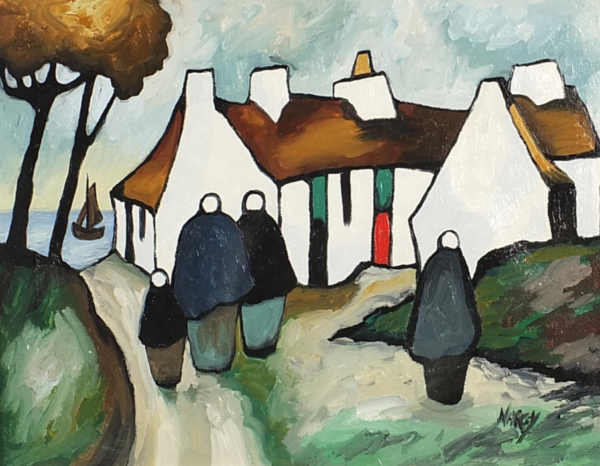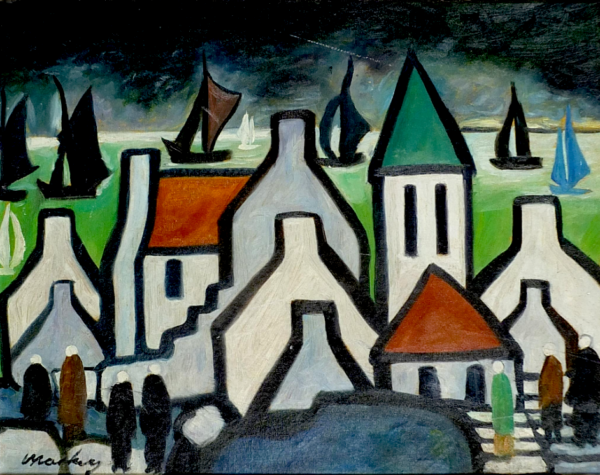Markey Robinson was born in Belfast in 1918. An avid reader of fine art books as a child, he trained for a time at the Belfast College of Art. Robinson became a merchant seaman, and later a welder, but his main passion remained painting. Sadly, the next thirty years were tough. Despite showing his paintings in a number of exhibitions, it wasn’t until the 1980s that he achieved significant commercial success as an artist.
Now noted as the foremost Irish Primitive painter, Markey Robinson began exhibiting his works in 1942 when three of his paintings – Autumn Landscape, Boulogne and Irish Port, 1940 were shown at the Royal Ulster Academy of Arts exhibition. The following year included his work in the Civil Defense Exhibition in London. He showed again at the Ulster Academy in 1944, as well as the Irish Exhibition of Living Art in Dublin. He continued exhibiting in Belfast, Dublin, Edinburgh and London throughout the 1940s and 1950s. His works included French scenes, portrait art, and landscape painting as well as a quantity of sculpture. In 1961, Piccolo Gallery in Belfast staged Markey Robinson’s first solo exhibition.
As it was, Robinson’s reputation soared during the 1980s and 1990s. He had one-man shows at a number of galleries, including: Sligo Art Gallery (1977); Farins Gallery, Washington DC (1983); Apollo Galleries, Backrock, Dublin (1984); Peel Gallery, Montreal (1984); Galerie Weber, Geneva (1985); Swan Centre, Dublin (1986); Walker Gallery, Coleraine, County Derry (1988); George Gallery, Dublin [Retrospective] (1988); Lincoln Gallery, Dublin (1988); Emer Gallery, Belfast (1989). During this period he travelled to France, North Africa and the USA.
As an artist, Markey Robinson produced artworks with similar elements to those of Matisse, Derain and Picasso (especially his clown and figure studies). His work has also been influenced by the Incas and the Aztecs, as evidenced by his authentic style of bold brush paintwork. But Robinson’s reputation rests in large part on his evocative landscapes, depicting the cold, misty, western Irish seaboard with its hues of grey, blue, green and white. In contrast, his Spanish-scene paintings are dressed in vivid, hot colours of red, orange, electric blue, pink and yellow. In his later years, Markey Robinson returned to Belfast where he died suddenly in January 1999. His paintings are represented in a number of public and private collections of Irish art.


